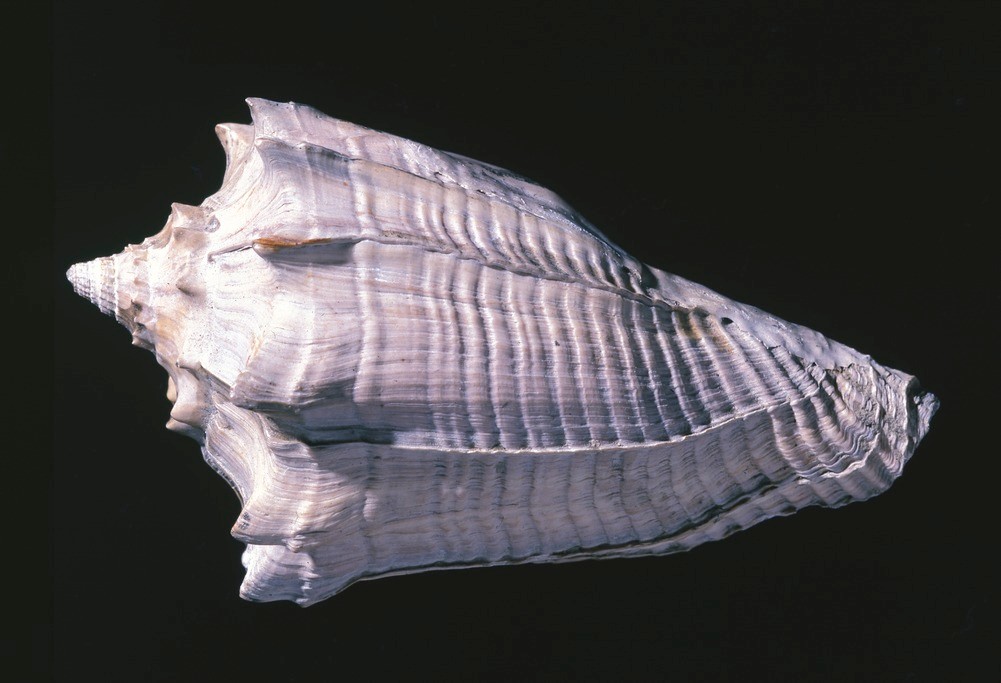| P number: | P550291 |
|---|---|
| Caption: | Volutispina luctator, a Cretaceous to Recent gastropod. |
| Description: | Volutispina first evolved in the late Cretaceous times and is still found living today. The species Volutispina luctator which is illustrated can be found in the Cainozoic and Recent shallow marine sediments. Volutispina luctator is a robust, thick-shelled caenogastropod. It has a fusiform shape due to the presence of a large siphonal canal below the aperture. The shell is ornamented by ribs and nodes (varices) which were excreted at the aperture and amalgamated into the shell as the animal grew. Between the thicker ribs are thin ribs and spiral cords. Gastropods are molluscs with a muscular foot, eyes, tentacles, and a rasp-like feeding organ (a radula), although only the coiled or conical shell is fossilised. The earliest Cambrian species were marine, but gastropods now colonise fresh water and the land. Classification is based mainly on soft body parts, which are not fossilised, and although there is uncertainty, most fossils appear to fall into one of three groups: 1. Archaeogastropods which have two auricles in the heart, two gills and two kidneys. 2. Caenogastropods which have one gill, auricle and kidney and sometimes a siphon. 3. Pulmonates which have a lung. |
| Photographer: | Unknown |
| Copyright statement: | Unknown |
| Orientation: | Landscape |
| Size: | 347.88 KB; 1001 x 683 pixels; 85 x 58 mm (print at 300 DPI); 265 x 181 mm (screen at 96 DPI); |
| Average Rating: | Not yet rated |
| Categories: | Best of BGS Images/ Fossils |
Reviews
There is currently no feedback

